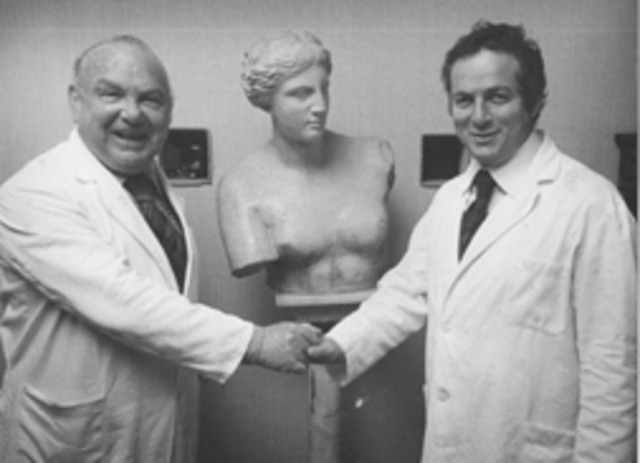
Early liposuction
The origins of liposuction date back to 1974 when two Italian doctors, Arpad and Giorgio Fischer, developed a blunt tunnelling surgery technique.
In 1978, French physicians Yves-Gerard Illouz and Pierre Fournier took the surgery forward by modifying techniques to reduce sedation and morbidity risks.
By the early 1980’s liposuction had become extremely popular but was still a nascent operation prone to excessive bleeding and sometimes unsightly skin aberrations.
In the early days it was standard to give patients general anaesthesia, and the diameter of the standard cannula was between 6mm and 10mm with a cross-sectional area sometimes up to 25 times greater than those used today.
The Illouz and Fournier blunt-tipped cannulas reduced blood loss and damage to nerves and blood vessels, leading to fewer complications and cases of shock or death. Recovery times shortened, and patients had less postoperative pain.
Techniques improved through the 1980’s as surgeons infused more saline, mixing it with epinephrine, a drug that reduces bleeding by constricting blood vessels, and lidocaine, a local anaesthetic. As large amounts of fluid were used this was nicknamed the ‘wet technique’.
Surgeons used greater levels of saline/epinephrine/lidocaine fluid, calling the ‘super-wet technique’, in a bid to prevent major blood loss and reduce bruising and pain. The fluid would swell and engorge the fat to be removed alongside the area around it.
As the popularity of liposuction soared, surgeons began combining anaesthetic strengths; mixing general anaesthesia, epidural regional anaesthesia or heavy IV sedation and small amounts of local anaesthesia.
Until the invention of the tumescent technique it was still not uncommon to suffer excessive bleeding and skin irregularities, however.
How the tumescent technique changed the game
The invention of the tumescent technique of liposuction in 1985 by Dr Jeffrey Klein revolutionised the industry.
For the first time, with the use of smaller cannulas and local anaesthetic, the risks of excessive bleeding and skin inconsistencies were dramatically reduced.
Doctors were able to reassure their patients, that the uncertainties associated with conventional methods of liposuction, were minimal.
The first patient
The first tumescent liposuction surgery was carried out on April 5, 1985, by Dr Klein.
The patient had localised accumulation of fat on her lower abdomen and a hysterectomy scar. Dr Klein used undiluted concentrations of local anaesthesia (500mg of lidocaine and 1 mg of epinephrine in 50ml.) to remove just under 100ml of fat.
The patient said they experienced almost no pain during the treatment and suffered no surgical bleeding, and this was accredited to the epinephrine causing capillary vasoconstriction; the constriction of blood vessels.
The high concentration of epinephrine did reportedly cause a stinging sensation during administration and a rapid increase in heart rate, also known as tachycardia.
The evolution of tumescent liposuction
As Dr Klein further developed the technique he increased dilution levels of the anaesthetic solution for subsequent patients. The level of dilution allows smoother flow and larger quantities of anaesthesia into the cannulas that spread more widely and affect a larger area in the body.
Although the micro cannula removes less fat per-minute compared to traditional cannulas, these small diameter cannulas allow for removal of a greater total volume of fat, and produce a much smoother, cleaner end result.
He noticed that as dilution increased, with no change in the anaesthesia concentration, both the stinging sensation previously felt by patients and the tachycardia were dramatically reduced. He also noticed that a greater area of subcutaneous fat was reached.
By the end of 1985, Dr Klein had perfected this technique and found an optimum level of anaesthesia; 500-1250mg of lidocaine and 0.5-1.0mg of epinephrine per litre of solution.
Tumescent liposuction – shared with the world
The tumescent liposuction technique was shared publicly for the first time by Dr Klein in Philadelphia in June 1986 at a lecture.
In January 1987, The American Journal of Cosmetic Surgery published the first ever article detailing the technique (Klein JA, The Tumescent technique for liposuction surgery. American Journal of Cosmetic Surgery, 1987, volume 4, pages 263-267).
Tumescent liposuction today
The technique has been further refined and perfected over the years. Liposuction is today performed with extraordinary artistry and skill using just local anaesthesia. Gone are the days of stinging pain and increased heart rates, which were eliminated by giving the patient 0.1mg of clonidine orally before the surgery.